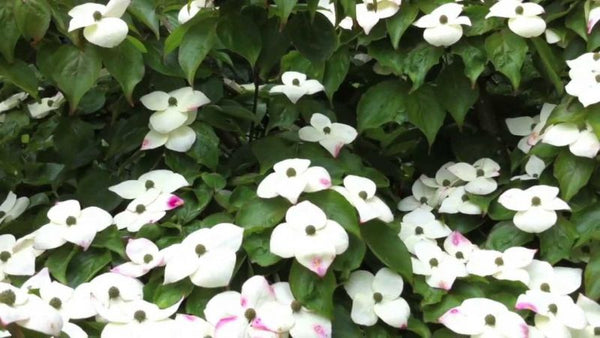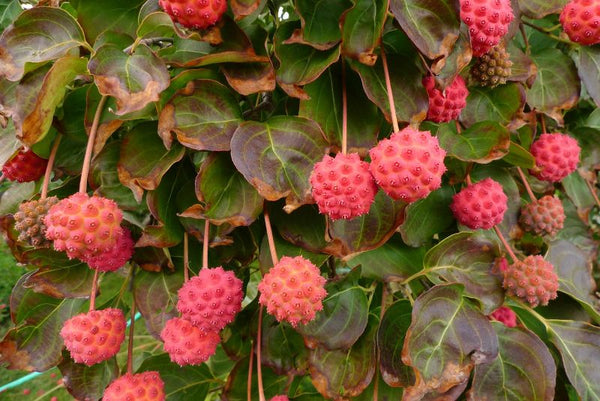Japanese dogwood (cornus kousa)
Shipping calculated at checkout
30 in stock
Need more? Contact us
zone 5 in limited quantity
This small tree with its elegant silhouette would benefit from being better known and planted in gardens as its ornamental qualities are great. Its white or pink flowers at the end of spring are quite remarkable and its leaves take on a very beautiful autumn hue. Let yourself be seduced by its beauty, it is easy to grow.
A dogwood native to the Far East. Cornus kousa, which belongs to the Cornaceae family, which also includes species of dogwoods with decorative foliage or bark, is native to Japan and Korea (this gives it its common name of Japanese dogwood) from where it was brought back to Europe in the 19th century. There are also Chinese species which were introduced a little later and which are also very interesting for the garden.
3 to 7 meters high and capable of spreading over 4 meters wide, it is distinguished by its flared shape and its horizontal branches, which give it a very graphic shape, ideal for adding an oriental touch. The oval leaves, shiny and wavy at the edges, are dark green and turn scarlet in autumn before falling. Its flowering, which begins in June, is truly spectacular. The flowers themselves, a sort of green glomeruli, are very discreet but they are surrounded by 4 large white or pink bracts. Their large umbel-shaped corollas which seem to rest on the foliage have a great effect for 4 weeks. If the summer has been hot enough, red fruits similar to strawberries follow them.
Cornus kousa is much less demanding than American dogwoods (Cornus florida) which require frankly acidic soil. It appreciates fertile soils therefore rich in humus, neutral or acidic, preferably well drained but it also accepts clay soils. It adapts to very slightly limestone soils. On the other hand, it hates too dry soils where it vegetates, and needs freshness to thrive.
Exposure
It likes a sunny but not hot situation. In a hot region, plant it in partial shade, for example in the undergrowth.
video that shows us the edible side of the fruit



